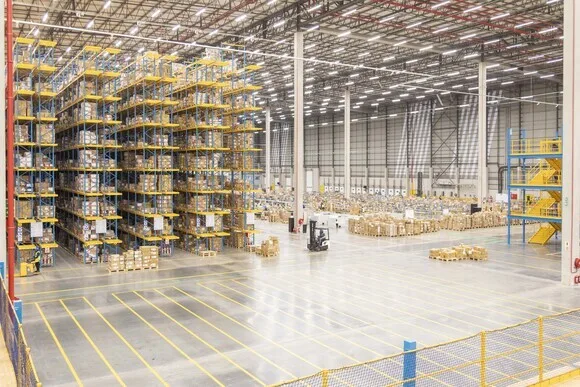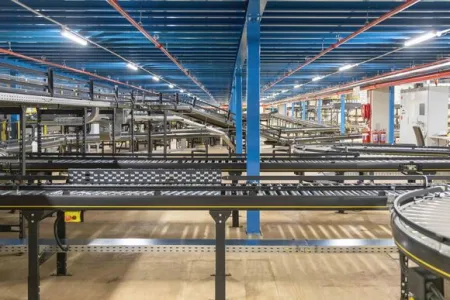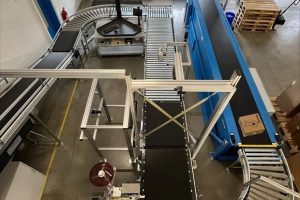Automation for South African omnichannel fulfillment operation
The Foschini Group (TFG) has selected Fortna as its strategic partner to optimise omnichannel fulfillment through intelligent automation and software — setting new benchmarks for efficiency, scalability, and service levels in South Africa.

TFG HAS set the automation of picking processes as a milestone in its strategic expansion plan. The South African retailer has been working with Fortna in its capacity as an integrator and software supplier for years. Fortna has helped TFG enhance eComm performance and optimise inventory management in this project.
To ensure optimal availability of its product range, TFG operates several DCs across South Africa. One of them is the state-of-the-art Riverfields DC, which was commissioned in September 2024. Riverfields DC is part of a multi-phase supply chain optimisation initiative that targets the continued increase of the site’s capacity to centralise the stock for both store and e-commerce fulfillment. Riverfields enables the strategy to consolidate 13 smaller distribution centres to seven to meet continuously growing demands for speed and efficiency.

TFG head of logistics Michael Rhategan, says: “We needed to significantly strengthen our central capabilities in fulfillment and distribution closer to our biggest market in Gauteng and above all, optimise operations by implementing consolidated processing.
“Our new Riverfields Distribution Centre successfully went into operation with the support of Fortna in 2024. It is the heart of our centralised omnichannel strategy and key to significantly improving on multiple levels.”
Automated order consolidation
With a footprint of 75,000 sq m, the integration of advanced software and state-of-the-art technologies allows for automated order consolidation of over 22 brands. This increases the centralised processing of all eCommerce orders targeting 70% central fulfillment. Rapid demand response capabilities enhance the availability of individual clothing sizes in the stores. In addition, order fulfillment costs are significantly reduced through a reduction in parcels per order which also improves customer experience with fewer doorbell rings. Centralisation of both store fulfillment and eCommerce further adds opportunities through shared transport networks for both click-and-collect deliveries and home deliveries. The new supply chain and intralogistics design supports the development of resilient, flexible scenarios for supplying retail in response to changing requirements and thus facilitates all strategic sales initiatives.
Handle 450,000 shipments per week
Fortna senior project manager Fayyaaz Akoob, adds: “To more efficiently handle an average of 450,000 shipments per week, we introduced automation in the goods receipt, picking, and also in dispatch processes. Fortna WES, our warehouse execution system software, now dynamically assigns tasks, balances loads and enables an optimal utilisation of available workforce and technical resources. It is the central platform that allows TFG to monitor and control all processes in real-time, empowering them to respond rapidly to changing requirements and unexpected events.”
Goods receipt
In the goods receipt process, as well as in storage, retrieval, and picking, TFG uses RFID tunnels for automated, precise identification of items, which in turn allows significantly accelerated, more accurate inventory management. With the new demand-driven retail supply, global best practices of the fashion supply chain could be adopted: a demand-driven pull strategy, which is very responsive in allocating inventory to current demand, replaces the previously applied forecast-driven “push model.” The exact mapping of inventory in the stores and current demand reduces the need to discount assortment in the stores to relieve the limited storage capacity.

In dispatch, orders are differentiated by order type, order volume, and shipping destination to ensure maximum efficiency and accuracy: for larger orders, items are sorted according to the “put-to-store” model and directly distributed to the respective points of sale. Smaller B2C orders are manually picked in a new 4-story shelving system with 190,000 picking bays.





